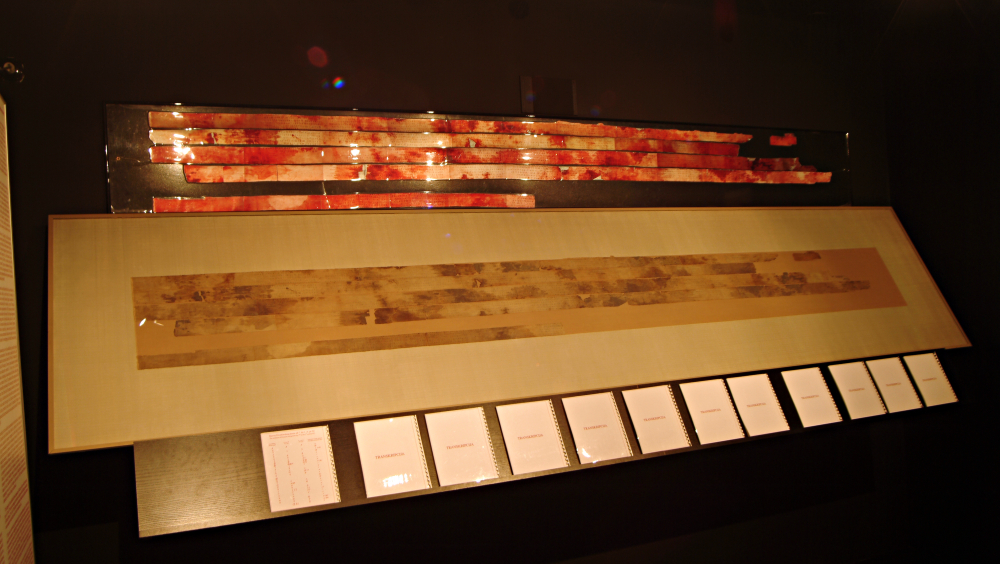Across Civilizations: The Zagreb Mummy and Her Eternal Journey
The Zagreb Mummy, resting in the Archaeological Museum in Zagreb, is more than an ancient artifact—she is a bridge between civilizations. Wrapped not only in linen but in mystery, she represents an extraordinary link between Egyptian and Etruscan cultures. Discovered in the 19th century with bandages inscribed in the enigmatic Etruscan language, she offers rare insight into a cultural exchange that spans continents and millennia.
Her journey from Egypt to Europe highlights the deep historical connections between the Mediterranean and the broader European heritage. Though her name is lost, she endures—an echo of the ancient Egyptian belief that remembrance ensures survival in the afterlife. Today, visitors and scholars alike continue to speak of her, preserving her spirit and uncovering the past. A silent witness to history, she reminds us that even forgotten individuals leave lasting marks on our collective European story.
In the dim glow of the Archaeological Museum in Zagreb, she rests, wrapped in the silent language of an almost forgotten European civilization. The Zagreb Mummy, perhaps once a woman of Ancient Egypt or Etruria, now lies encased not only in linen but in mystery, her story stretching across millennia.
The first thing that comes to mind upon seeing her is: “Who was she?”
Radiographic studies suggest she was a woman in her thirties, her name, unfortunately, lost to time. Were rituals, performed upon her death remain etched in the fibres of her linen, preserving an unknown chapter of Etruscan and Egyptian cultural exchange? How did an Egyptian woman exactly come to be wrapped in Etruscan script? Was she perhaps part of a colony of Etruscans in Egypt? A traveller between worlds, bridging two civilizations, continents? These unsolvable questions persist, as does her presence, a silent witness to what surely was a fascinating historical story.
Her journey transcends time and geography, weaving together the cultural tapestry of Europe and the Mediterranean. Purchased in the mid-19th century by Mihael Barić during his travels in Egypt, she was brought to the heart of Europe, far from the sands where she once prepared for the Afterlife. Upon unwrapping her remains, scholars uncovered something extraordinary—her linen bandages bore an ancient script, not in Egyptian hieroglyphs, but in the enigmatic and still only partially understood Etruscan language. This revelation transformed her into a bridge between civilizations, linking Egypt and the Etruscan world, and highlighting Europe's deep historical connections with the wider ancient Mediterranean. More than just an image of the mummification process which fascinates one and all, she stands as a rare and invaluable key to an ancient world still waiting to be fully deciphered, demonstrating how Europe’s heritage is deeply intertwined with cultures beyond its borders.
Yet, despite the passage of centuries, she is not truly gone. The Egyptians believed that as long as a name was spoken, the soul would continue to exist in the afterlife. Though her name remains a mystery, her spirit endures. In the hushed whispers of visitors, in the careful study of scholars, in the reverent gaze of those who pause before her, she is remembered. And in that remembrance, she lives, she provokes a thought. Perhaps, one hopes, it also encourages all who see her, to reflect upon and remember those whose names might be forgotten even as we ready this story…
"To speak a name is to make them live," the ancient Egyptians said. Though we may not know the name she carried in life, her story—woven in linen and mystery—is now spoken aloud. And in that moment, she steps once more into eternity. And so, why wouldn’t she stand as a symbol of all those unrecalled, struggling to reveal their own story, to remind visitors who cannot wait to see her when they visit the Archaeological Museum in Zagreb, of how much history one person can create.
The Zagreb Mummy embodies the deep and complex cultural interconnections that define European heritage. Her linen bandages, inscribed with the mysterious Etruscan script, link two great civilizations—Ancient Egypt and the Etruscan world—demonstrating that Europe’s history has always been shaped by exchanges beyond its borders. Brought to the heart of Europe in the 19th century, she became a catalyst for scholarly inquiry, fostering cross-border research and dialogue on linguistic, archaeological, and historical heritage. Over the years, she has become a symbol and the "talk of the town" among visitors to Zagreb, inspiring them to ask: What other European heritage might I discover, thanks to her?
Her story aligns with the Council of Europe’s values, highlighting the shared past that unites European nations. As a symbol of migration, knowledge transfer, and the preservation of cultural identity, she challenges us to consider the legacies of forgotten individuals across time. By making her story accessible through digital tools, the aim was to encourage engagement with Europe’s layered heritage, foster inclusivity, education, and dialogue on the diverse roots of European identity and cooperation.

